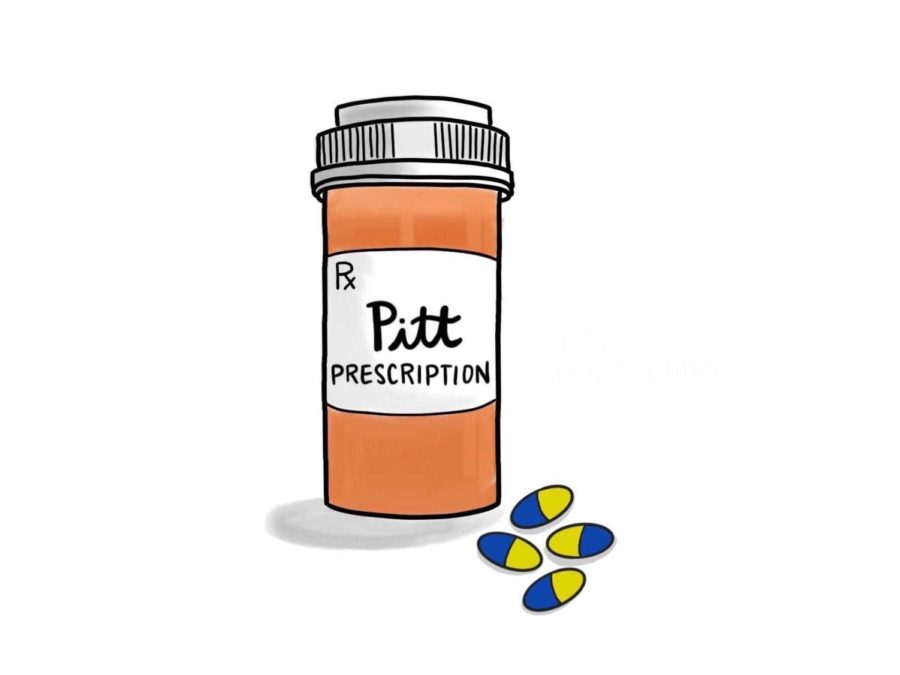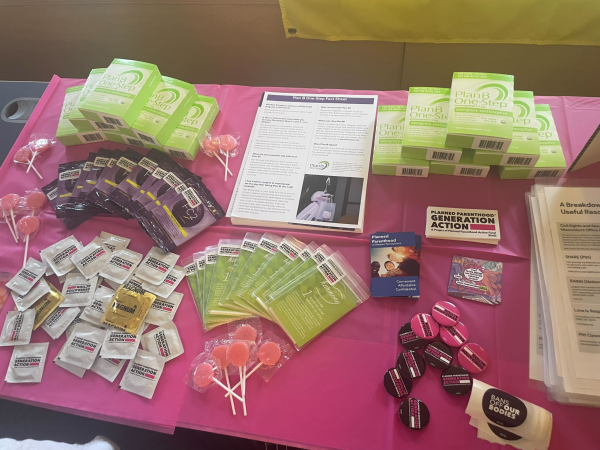The Pitt Prescription | All about antibiotics
The Pitt Prescription is a biweekly blog where student pharmacist and Senior Staff Writer Elizabeth Donnelly provides tips on how to stay healthy in college. This edition was reviewed by Karen S. Pater, PharmD., CDCES, BCACP.
Shruti Talekar | Contributing Editor
The Pitt Prescription
March 8, 2021
One of the most pressing medical issues of our time is the growing rates of antibiotic resistance within our communities. Antibiotic resistance is a huge threat to public health, and it occurs when infection-causing bacteria evolve and are able to escape the medications once capable of eradicating them.
Annually in the United States, there are more than 2.8 million infections caused by antibiotic-resistant organisms, which results in more than 35,000 deaths. Over time, germs like bacteria develop resistance mechanisms that help them survive even when in the presence of antibiotics. These mechanisms are usually formed from small pieces of DNA that can carry genetic instructions from one bacteria to another, and thus create a network of resistance.
Although antibiotics are incredibly important for the treatment of many infectious diseases, each time they are prescribed and used, antibiotic resistance could potentially develop. Antibiotics are life-saving medications, and their importance should never be questioned — however, they must be used properly.
One of the largest contributors to antibiotic resistance is the overuse of these medications. It is important that people only use antibiotics when indicated. When used properly, the benefits of antibiotic therapy significantly outweigh the risks, but overprescribing remains an issue with regards to these medications. On a yearly basis, roughly 28% of all antibiotics are prescribed unnecessarily in doctor’s offices and ERs. This contributes to the issue of resistance, as physicians may feel pressure to prescribe them when some people seeking medical care do not want to go home without a prescription.
It is a common misconception that antibiotics can be taken to treat any illness, but this is not the case. Antibiotics should be used solely for infections or illnesses caused by bacteria, like bacterial pneumonia and strep throat. Antibiotics should never be used for any illness caused by viruses, like colds, the flu or COVID-19. Antibiotics are not even necessary for all bacterial infections. Some bacterial infections are what is known as “self-limiting,” which means they can resolve on their own without the need for treatment –– for instance, food poisoning. When antibiotics are prescribed incorrectly, they will not be able to help, but they may still cause unpleasant side effects to anyone consuming them.
It is never a good idea to take antibiotics unless they were prescribed to you by your health care team. Oftentimes, people will use old or leftover antibiotics when they feel sick to try and remedy their symptoms, but this is an issue for several reasons. First, if the illness is caused by anything other than bacteria, they will not be effective and can harm your body’s natural bacteria. Second, it may not be the right kind of antibiotic therapy for whatever bacteria is causing the illness. Third, most antibiotics have strict regimens that need to be followed in order for someone to recover, so taking leftover pills may result in inadequate duration of therapy. Finally, there is always the risk of experiencing an allergic reaction to any new medication. This is why you should never use anyone else’s prescriptions, especially with antibiotics.
If antibiotics are prescribed to you, it is very important to take them for the entire duration recommended by your doctor, even if your symptoms are gone and you feel much better. Taking the full course of antibiotics helps to ensure that the disease-causing bacteria is eradicated completely. If you do not finish all the antibiotics, then the infection could come back in the future and cause further complications.
Additionally, it is hypothesized that not finishing the full course exposes the harmful bacteria to just enough of the antibiotic that they can form the previously mentioned resistance mechanisms. This causes them to transform into superbugs, which are highly resistant disease-causing bacteria. Superbugs are often resistant to most antibiotics and other anti-infective medications, which makes these infections very difficult to treat and often capable of causing complications. When bacteria become resistant to these antibiotics, the medications lose effectiveness in treating the disease, which may lead to further complications such as sepsis — a condition where an infection has spread so much throughout the body that it can cause organ failure, and, ultimately, death.
There are several tactics everyone should focus on to try to fight against resistance. First, practice good hand and body hygiene to avoid getting sick. This is especially pertinent right now as we are still in the midst of a pandemic. There are also some vaccinations available for diseases caused by bacteria, like the DTaP vaccine or Tdap booster, which protects against tetanus, diphtheria and pertussis, which are all potentially serious bacterial infections. Also, if you are prescribed antibiotics, take them exactly as prescribed and for the entire duration the doctor told you. Additionally, you should never take antibiotics that were not prescribed to you by your doctor, including old, unfinished antibiotics from a previous infection.
The best way to avoid antibiotic resistance is to ensure proper antibiotic use. They are not viable options to treat COVID-19 — which is a misconception that has been circulating around social media and other online platforms. If you think you are sick and may have an infection, you can go to an urgent care clinic, the Student Health Service or your doctor for an exam, but never self-diagnose or prescribe. Together, we can work to eliminate the spread of these superbugs. Elizabeth writes primarily about self-care and pharmacological topics. You can reach her at [email protected].








